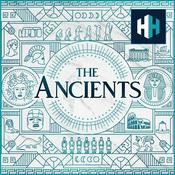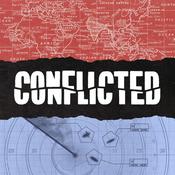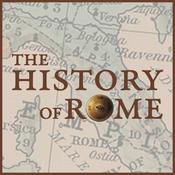220 episódios

The Rise and Fall and Rise Again of Dur-Sharrukin
17/12/2025 | 46min
Apologies for my voice and the lack of graphics. Been sick again and barely got this out today.Episode 179 examines the founding, construction, abandonment, and rediscovery of Dur-Sharrukin (Khorsabad), the short-lived royal capital built by Sargon II of Assyria in the late eighth century BCE. The narrative begins with the history of early Mesopotamian excavation through the career of Paul-Émile Botta, whose 1843–1844 work near Mosul and Khorsabad helped inaugurate Assyriology and introduced Europe to monumental Assyrian palace architecture, relief sculpture, and royal inscriptions. The episode follows Botta’s unusual path into Near Eastern exploration, placing his expeditionary background within wider nineteenth-century networks of travel, collecting, and emerging archaeological method, and contrasts the French discoveries at Khorsabad with the subsequent British excavations associated with Austen Henry Layard at Kalhu and Nineveh.From this modern historiographical prelude, the episode turns back to 717 BCE and reconstructs Dur-Sharrukin as an ideological and administrative project of empire. It discusses the city’s location, scale, labor regime, deportee settlement, and the programmatic symbolism of a purpose-built capital dedicated to the “true king.” Particular attention is given to the citadel complex—palace, temples, and ziggurat—alongside the logistical systems required to sustain rapid construction, long-distance procurement of materials, and the production of large-scale court art such as lamassu guardians and carved orthostats. The episode also engages changing archaeological interpretations of the site, including how later excavations and recent geophysical survey have revised older claims that the city was never fully completed or inhabited by demonstrating a substantial lower town and more complex occupational history.The final section addresses the political and religious implications of Sargon II’s death in 705 BCE and the resulting abandonment of the city under Sennacherib, framing Dur-Sharrukin as a case study in the relationship between royal charisma, omen interpretation, and the volatility of capital cities in the Neo-Assyrian world. In doing so, the episode situates Dur-Sharrukin within broader Near Eastern patterns of state power, forced migration, monumental construction, and the archaeological afterlives of imperial projects.I am also doing daily history facts again, at least until I run out of time again. You can find Oldest Stories daily on Tiktok and Youtube Shorts.If you like the show, consider sharing with your friends, leaving a like, subscribing, or even supporting financially:Buy the Oldest Stories books: https://a.co/d/7Wn4jhSDonate here: https://oldeststories.net/or on patreon: https://patreon.com/JamesBleckleyor on youtube: https://www.youtube.com/channel/UCCG2tPxnHNNvMd0VrInekaA/joinYoutube and Patreon members get access to bonus content about Egyptian culture and myths.

The Ascendency of Sargon II
03/12/2025 | 48min
Sargon II of Assyria faces a crisis of legitimacy after a humiliating defeat, but transforms potential disaster into triumph through military genius and calculated brutality. This episode chronicles his desperate 720 BCE campaign from Mesopotamia to the Levant, where he perfects combined arms warfare and decimates Samaria so thoroughly that ten tribes of Israel vanish from history.Following his controversial rise to power, Sargon must prove divine favor through victory or lose everything. Watch as he masters siege warfare with unprecedented tactical sophistication, deploying battering rams under coordinated covering fire to crack fortress walls that stymied his predecessors. His lightning campaign against Yahu-Bihdi's coalition demonstrates the Assyrian war machine at peak efficiency—mass deportations, public flayings, and systematic urban destruction become instruments of imperial control.The episode explores Sargon's subsequent campaigns along Assyria's contested frontiers, from the fragmenting Mannean kingdom in the Zagros Mountains to rebellious Tabal under Phrygian influence. Detailed correspondence reveals the mechanics of ancient border warfare, including an elaborate ruse involving fake fortress construction to ambush Urartian raiders. We examine how Sargon manipulates succession crises, deploys intelligence networks, and uses overwhelming force—sometimes fielding armies larger than entire city populations—to maintain imperial dominance against Urartu, Phrygia, and internal dissent.The narrative culminates with the mysterious fall of Carchemish, the last Neo-Hittite vassal, whose wealth funds Sargon's most ambitious project yet: a new capital city that will bear both his glory and an ominous curse.I am also doing daily history facts again, at least until I run out of time again. You can find Oldest Stories daily on Tiktok and Youtube Shorts.If you like the show, consider sharing with your friends, leaving a like, subscribing, or even supporting financially:Buy the Oldest Stories books: https://a.co/d/7Wn4jhSDonate here: https://oldeststories.net/or on patreon: https://patreon.com/JamesBleckleyor on youtube: https://www.youtube.com/channel/UCCG2tPxnHNNvMd0VrInekaA/joinYoutube and Patreon members get access to bonus content about Egyptian culture and myths.

The Ill-Omened Origins of Sargon II
19/11/2025 | 45min
Listen all the way to the end for a special musical feature about Sargon II. This episode explores one of the most pivotal and least understood turning points in Neo-Assyrian history, examining the rise of a king whose origins, motives, and very name remain contested even after a century of scholarship. These are the Oldest Stories, available at OldestStories.net. Note that the song at the end of the episode is AI generated.In 722 BCE, Sargon II seized the Assyrian throne and entered an eighteen-year reign that forms the best-documented era of ancient Mesopotamian history. Yet for all his inscriptions and annals, Sargon himself remains an enigma. His parentage, early career, accession, and the meaning of his throne name are questions that continue to challenge scholars of the Neo-Assyrian Empire. This episode delves deeply into the theories surrounding his origins, including newly translated inscriptions from Assur, shifting interpretations of his name from Sharru-Kenu to Sharru-Ukin, and the implications of his apparent disinterest in his own ancestry. From the ideological weight of throne names to the complexities of logosyllabic Akkadian spelling, we explore how philology, archaeology, and political history intersect to shape our understanding of this king.We also follow Sargon into the disastrous opening months of his reign: the unclear succession, the purge of thousands of internal opponents, the immediate loss of Babylon to Marduk-Apla-Iddina, the Levantine revolts, and the devastating defeat near Der at the hands of the Elamites. These events set the stage for a king on the brink of failure, navigating accusations of ill-omen, political chaos, and the danger of being overthrown before his first year had even ended. Yet they also reveal the moment in which Sargon’s extraordinary administrative and logistical genius emerges, allowing him to rescue his reign and initiate the Sargonid Golden Age.Along the way, the episode examines the broader historical context of Chaldean and Elamite politics, Babylonian ritual ideology, the transformation of Assyrian year-dating from limmu officials to palu counts, and the evolving religious presentation of Assur’s kingship. It traces the subtle theological and political shifts that distinguish Sargon from his predecessors, as well as the early strategic failures and last-minute decisions that determine the fate of the empire. The result is a comprehensive look at one of the most complex figures of the ancient Near East and the precarious moment at which Assyria’s future hung in the balance.If you enjoy the episode, consider supporting the show on Patreon, becoming a YouTube member, or donating directly at OldestStories.net. Your support truly helps this project grow. Stay tuned through the end for the Sargon II musical piece, and subscribe to follow Sargon’s campaigns as the imperial war machine finally roars to life in the next installment.I am also doing daily history facts again, at least until I run out of time again. You can find Oldest Stories daily on Tiktok and Youtube Shorts.If you like the show, consider sharing with your friends, leaving a like, subscribing, or even supporting financially:Buy the Oldest Stories books: https://a.co/d/7Wn4jhSDonate here: https://oldeststories.net/or on patreon: https://patreon.com/JamesBleckleyor on youtube: https://www.youtube.com/channel/UCCG2tPxnHNNvMd0VrInekaA/joinYoutube and Patreon members get access to bonus content about Egyptian culture and myths.

Shalmaneser the Least
05/11/2025 | 35min
In 727 BCE, the death of Tiglath-Pileser III—one of Assyria’s greatest reformers and conquerors—brought to the throne his son Ululayu, known to history by his regnal name Shalmaneser V. This episode of Oldest Stories examines the short, poorly documented, yet pivotal reign of Shalmaneser the Least, exploring the troubled transition between the age of Tiglath-Pileser’s reform and the rise of Sargon II. Drawing on fragmentary Assyrian records, biblical sources, and archaeological evidence, the episode reconstructs the domestic policies, fiscal reforms, and failed campaigns that defined his rule.Listeners will learn how Shalmaneser attempted to standardize taxation and weights across the empire—introducing the controversial “Mina of the King”—and how these bureaucratic experiments may have destabilized the nobility and provoked internal dissent. His reign also saw major events in the wider Near East: the rebellion of King Hoshea of Israel, the long siege of Samaria described in the Book of Kings, and the abortive Assyrian assault on Tyre. Despite ruling over the largest empire yet known, Shalmaneser’s administrative mediocrity and ill-fated reforms undermined Assyria’s stability, paving the way for Sargon’s coup and the beginning of the Sargonid dynasty.This episode situates Shalmaneser V within the broader arc of Neo-Assyrian history, from the administrative innovations of Tiglath-Pileser III to the ideological and military transformations of Sargon II. It explores key themes in ancient Near Eastern politics, including royal succession, imperial bureaucracy, taxation, and the interaction between Assyria and Israel. Ideal for students of Assyriology, biblical studies, and ancient history, “Shalmaneser the Least” offers a detailed look at one of the empire’s most obscure yet consequential rulers.Keywords: Shalmaneser V, Tiglath-Pileser III, Neo-Assyrian Empire, Assyria, Babylon, Sargon II, Samaria, Hoshea, Israel, Tyre, Assyrian kings, Near Eastern history, biblical archaeology, Assyrian reforms, ancient Mesopotamia.I am also doing daily history facts again, at least until I run out of time again. You can find Oldest Stories daily on Tiktok and Youtube Shorts.If you like the show, consider sharing with your friends, leaving a like, subscribing, or even supporting financially:Buy the Oldest Stories books: https://a.co/d/7Wn4jhSDonate here: https://oldeststories.net/or on patreon: https://patreon.com/JamesBleckleyor on youtube: https://www.youtube.com/channel/UCCG2tPxnHNNvMd0VrInekaA/joinYoutube and Patreon members get access to bonus content about Egyptian culture and myths.

Tiglath-Pileser Defeats Israel
22/10/2025 | 33min
Yes, there are more important things in the Syro-Ephraimite war than Israel's defeat, but the whole three year campaign is hugely important in world history, even if the things we consider to have been important were really just sort of side shows to the main action. We follow the full campaign in detail as Tiglath-Pileser confirms his final near eastern conquest.I am also doing daily history facts again, at least until I run out of time again. You can find Oldest Stories daily on Tiktok and Youtube Shorts.If you like the show, consider sharing with your friends, leaving a like, subscribing, or even supporting financially:Buy the Oldest Stories books: https://a.co/d/7Wn4jhSDonate here: https://oldeststories.net/or on patreon: https://patreon.com/JamesBleckleyor on youtube: https://www.youtube.com/channel/UCCG2tPxnHNNvMd0VrInekaA/joinYoutube and Patreon members get access to bonus content about Egyptian culture and myths.
Mais podcasts de História
Podcasts em tendência em História
Sobre Oldest Stories
Ouça Oldest Stories, História FM e muitos outros podcasts de todo o mundo com o aplicativo o radio.net

Obtenha o aplicativo gratuito radio.net
- Guardar rádios e podcasts favoritos
- Transmissão via Wi-Fi ou Bluetooth
- Carplay & Android Audo compatìvel
- E ainda mais funções
Obtenha o aplicativo gratuito radio.net
- Guardar rádios e podcasts favoritos
- Transmissão via Wi-Fi ou Bluetooth
- Carplay & Android Audo compatìvel
- E ainda mais funções


Oldest Stories
baixe o aplicativo,
ouça.



































